Bodybuilding.com is an institution in the fitness world. What weightlifter hasn't turned to its top-notch content for advice on programming and form? For over two decades, it's been the authoritative online source for training advice, with content produced by credentialed and experienced experts who know their fields backwards and forwards.
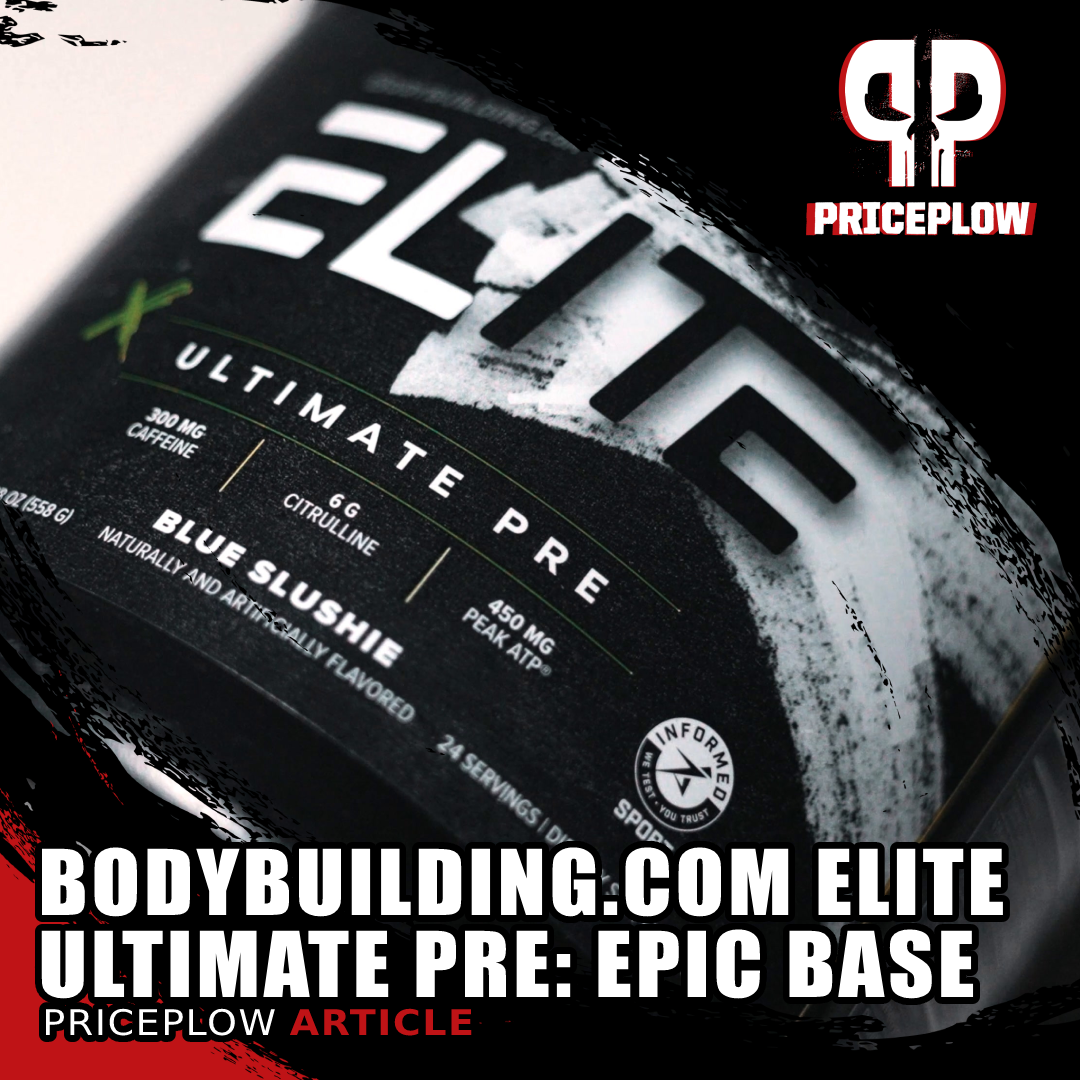
Bodybuilding.com has a new lineup of Elite Ultimate PRE-Workouts, one with stims and the other stim-free, and the stim-free base is just what we've been looking for with Peak ATP and Nitrosigine!
As such, you have to expect the supplements from Bodybuilding.com to be just as on-point. There have been many lineups from the company, such as their Signature Series, but today we introduce to you their Elite Series. The online powerhouse is bringing their high level of rigor and precision to their formulation game, as exemplified by the two Bodybuilding.com-branded ELITE Ultimate Pre-Workouts, which we'll be discussing today.
Bodybuilding.com Elite Ultimate Pre-Workouts: Stim and Stim-Free
Bodybuilding.com follows the industry trend in offering two pre-workout versions in their launch - one with caffeine (300 milligrams worth) and other nootropics; and another that's stim-free. As you'll see, both have an incredible base of patented pump ingredients like Peak ATP and Nitrosigine as well as trusted commodities like citrulline, beta-alanine, and betaine.
In this article, we get into how these incredible formulas work, but first, check the PricePlow news and deals:
Bodybuilding.com – Deals and Price Drop Alerts
Get Price Alerts
No spam, no scams.
Disclosure: PricePlow relies on pricing from stores with which we have a business relationship. We work hard to keep pricing current, but you may find a better offer.
Posts are sponsored in part by the retailers and/or brands listed on this page.
First, let's get into the differences and similarities:
Bodybuilding.com Elite Ultimate Pre-Workouts: How they're similar
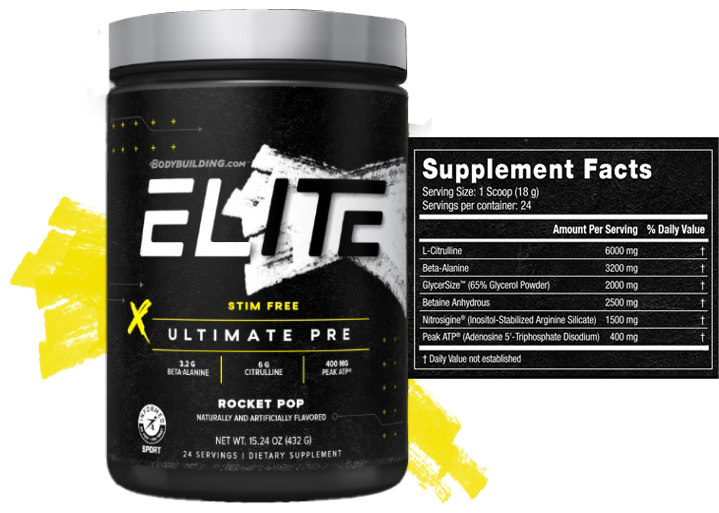
Let's start with the stim-free base, because it's essentially what's in the stim version, with a small couple of differences
Both formulas have the same trusted and tested foundations:
- L-Citrulline (6 grams in both)
- Beta-Alanine (3.2 grams in both)
- Betaine (2.5 grams in both)
- Nitrosigine (1.5 grams in both)
- Peak ATP (400 milligrams in stim-free, 450 milligrams in stim-based)
Additionally, both have 65% glycerol powder, with 2 grams in stim-free and 1 gram in stim-based.
We'll detail these ingredients below, but needless to say, whichever version of these pre-workouts you choose, you're getting a very solid lineup.
How they're different
Obviously, the stimulant-based version's 300 milligrams of caffeine is the biggest differentiator.
Interestingly, Bodybuilding.com went further than usual in terms of differentiating the stim-based from stim-free. Compared to the stim-based PRE, they've even eliminated ingredients that boost neurotransmitter production, like tyrosine, citicoline, and huperzine A, meaning you can take the stim-free formula without expecting any significant alterations to your state of mind.
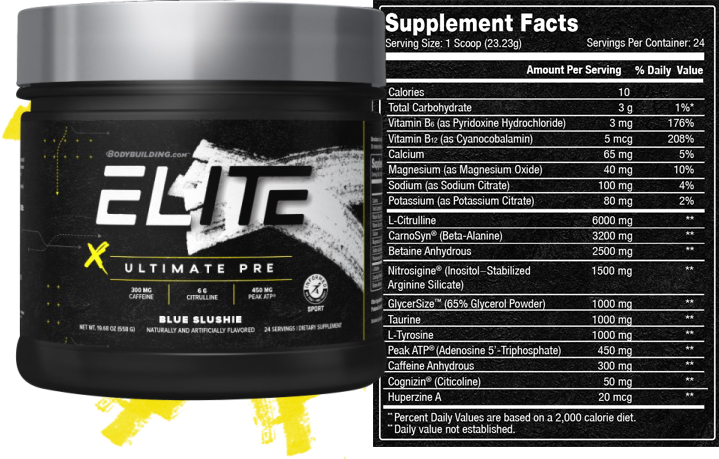
The stim-based versoin has a touch more Peak ATP and less glycerol, and then caffeine and some neurotransmitter boosters
The stimulant-based product also has more B vitamins and minerals, as well as a gram of taurine.
Price matters
Both still have 24 servings, yet the stim-free version has an 18 gram scoop (still large) compared to the 23 gram scoop in the stim-based version.
In response, Bodybuilding.com is offering the stim-free version at a lower price, and as we write this, it looks like an incredible deal for the patented and clinically-dosed ingredients you get, especially if you're a BodyFit member.
Let's explain each one now:
Bodybuilding.com Elite PRE-Workout Ingredients
Let's start with the base labeled above. In each scoop of Bodybuilding.com ELITE Ultimate Pre-Workout, you get the following:
-
L-Citrulline 6,000 mg
Here's the stim-free base for both pre-workouts -- the only difference is that the stim-version will have a gram less of glycerol and 50 milligrams more Peak ATP, and of course the rest of the stimulatory ingredients
Citrulline is an amino acid that's a precursor to nitric oxide (NO) synthesis.[1] It's the industry's current go-to NO booster, a title that used to belong to arginine. However, citrulline, thanks to its superior bioavailability, has largely supplanted arginine.[2-4]
Although citrulline isn't an essential amino acid – meaning your body can make some on its own – the amount of citrulline your body can produce is generally not enough for optimal effectiveness. Thus, supplemental citrulline is usually advisable, especially if you're training hard.
Why boost nitric oxide?
The reason we want more NO is that it triggers vasodilation, a process in which your blood vessels grow in diameter. This naturally results in lower heart rate and blood pressure as the blood vessels' physical resistance to circulation decreases. Vasodilation also comes with improvements to tissue perfusion as blood is delivered more effectively through small peripheral blood vessels.[4,5]
Improved circulation means that cells get oxygen and nutrients more efficiently and in higher quantities, leading to knock-on improvements in athletic performance and post-workout recovery.[6] It also means metabolic waste products like lactic acid get removed more efficiently. All in all, this provides increased overall cardiometabolic health.[7]
The Arginine Citrulline Cycle with a breakout showing the arginine-to-nitric oxide reaction. Image courtesy Wikimedia with added biochemistry sources.[8,9]
With all of that in mind, you probably won't be shocked to find out that citrulline research shows it can:
- Increase oxygen utilization, thus improving athletic performance at max intensity[10]
- Extend athletic endurance. One 2010 study found that citrulline supplements enabled participants to complete 53% more bench press reps compared to placebo controls.[11]
- Reduce post-exercise soreness, by approximately 40%.[11]
We can go on about nitric oxide, and will do so below (there are cognitive benefits to discuss) -- and we still have other ways to boost it thanks to Nitrosigine and Peak ATP. All in all, this makes for an incredible base, no matter what you're doing.
-
CarnoSyn (Beta-Alanine) – 3,200 mg
Beta-alanine is a well-worn and battle tested endurance boosting amino acid that shows up in most serious pre-workout formulas. It's been a standard ingredient in this category for well over a decade. Thanks to its impressive efficacy, we don't think it will fall out of favor any time soon.
It works by combining with the essential amino acid L-histidine, thus forming a molecule called carnosine, which your muscles use to dispose of lactic acid.[12] Since lactic acid buildup causes muscular fatigue, improving lactic acid metabolism can increase athletic endurance.
Sounds great, right? So, why don't we just supplement with carnosine? The answer is that carnosine's oral bioavailability is too low for it to be cost-effective. On the other hand, beta-alanine is quite bioavailable, and is generally the rate-limiting factor in carnosine production.[13,14]
Sports nutrition researchers have repeatedly found that beta-alanine can improve multiple dimensions of athletic performance, including time to exhaustion,[15,16] power,[17] and even body recomposition when taken long-term.[18]
There are multiple reviews and meta-analyses showing that beta-alanine has these effects in many different types of exercise and sports,[12,15,19] and that the 3.2 gram dose used in BBCOM ELITE Ultimate Pre is sufficient to substantially increase endurance and decrease fatigue in workouts between 30 seconds and 10 minutes in duration.[19]
Carnosyn – premium beta-alanine
Carnosyn is a patented form of beta-alanine created and sold by Natural Alternatives International.[20-23] It has an excellent reputation in the supplement industry for its purity and efficacy.
-
Betaine anhydrous – 2,500 mg
Betaine, also known by its formal name trimethylglycine (TMG), is a potent ergogenic aid with a ton of research at this 2.5 gram dose. This means it can increase the body's capacity for physical work – power, reps to exhaustion, and aerobic fitness are dimensions of athleticism that can improve with betaine.[24-28]
A landmark 2013 study showed that 2.5 grams of betaine every day can have profound effects on body mass and strength[27]
Let's get into the mechanisms, and then some of those specific benefits:
Donates methyl groups
Our favorite betaine fact is that it's a methyl donor, meaning the betaine molecule ferries methyl groups (CH3) to places they're needed for various metabolic processes.[29] The downstream effect is that betaine can help optimize adenosine triphosphate (ATP) production by eliminating potential bottlenecks, like methyl group availability.[30]
Betaine is great at this. In fact, it's one of the most potent methyl donor supplements identified in nutritional science.[31]
Specifically, methylation is important for maintaining an appropriate balance of homocysteine,[32] an amino acid that that can increase the risk for cardiovascular disease (CVD) if it builds up too much in the bloodstream.[33] This can make supplementation with methyl donors like betaine a great long-term investment in cardiovascular health and function.
Betaine as osmolyte – cellular hydration
Betaine also happens to be an osmolyte, meaning it helps regulate the osmotic pressure around cells, thus helping keep them optimally hydrated by increasing their ability to retain water.[31,34,35] With this extra water, cells have better access to nutrients and fuel, which can help protect cells against metabolic stress[27,36] and heat shock.[37,38] For this reason, betaine is often referred to as an osmoprotectant compound.[39]
Betaine and performance
Research shows that betaine supplementation can increase:
- Strength[24,25]
- Power[24,25,34]
- Body composition[27,28]
In one particularly impressive study from 2013, subjects taking 2,500 milligrams of betaine per day – the same dose present in these Bodybuilding ELITE Ultimate Pre Workouts – led to more than 5 pounds of muscle gain and 6 pounds of fat loss during a one-and-a-half month period. This shakes out to a 3% decrease in body fat in just 45 days.[27,28]
In a 2018 study, collegiate women who took betaine as part of a weightlifting regimen lost 4 pounds more body fat than the placebo group.[40]
So we have a second classic base ingredient, and more to come.
-
Nitrosigine (Inositol-Stabilized Arginine Silicate) – 1,500 mg
Nitrosigine is a great nitric oxide (NO) boosting ingredient, listed as Arginine Silicate Inositol on these labels.
Not only does Nitrosigine immediately boost N.O. levels, it keeps them elevated for a period of up to 2 weeks!
It's a patented ingredient that consists of arginine, inositol, and potassium silicate,[41] and is abbreviated as ASI in research. This trifecta has been shown to drastically increase the bioavailability of the arginine molecule,[42] which is a direct precursor to NO synthesis.[43]
Nitrosigine increases arginine's bioavailability by protecting it from stomach enzymes prematurely breaking it down. This enables arginine to transit your stomach intact and reach your intestines, where it can be absorbed into the bloodstream.[44] It even beats other common NO ingredients like L-citrulline, L-citrulline malate, L-arginine, L-arginine AKG, and agmatine sulfate in in vitro data.[45]
Nitrosigine is fast-acting and long-lasting – it's been shown to increase NO blood levels 30 minutes after ingestion, and keep them elevated for up to six hours.[46] It can enhance workouts and perceived energy levels according to research,[47] which is especially nice in the stimulant-free version here.
If you're looking for pumps, you'll be happy to see that this 1.5 gram dose was shown to increase arterial blood flow (as measured by flow-mediated dilation) an incredible 31% -- and it took a sizeable 8 grams of citrulline malate to get a similar effect.[48] Of course, here, we have both Nitrosigine and citrulline malate.
Nitrosigine's effects on cognition and the brain
One aspect of NO boosting people don't always consider is that the brain is no less sensitive to fluctuations in blood supply than any other organ in the body. In fact, pound-for-pound, the brain needs the most blood-borne oxygen and nutrients.
This means that improving circulation by targeting NO has the potential to improve cognition and, as it turns out, Nitrosigine can do exactly that.
One study found that pre-workout Nitrosigine supplementation can prevent the temporary cognitive decline that usually follows intense exercise.[49,50] But even in young healthy men who hadn't recently completed a workout, Nitrosigine helped accelerate task switching, the cognitive skill behind multitasking.[51] A third study, from 2021, found that the 1,500-milligram dose of Nitrosigine can boost short-term memory performance.[52]
All in all, we have an incredible form of arginine that boosts blood flow, and not only to the muscles!
-
GlycerSize (65% Glycerol Powder) – 1,000 mg in Stim or 2,000 mg in Stim-Free
Next up we have another osmolyte in glycerol, sometimes referred to as glycerin.[53] Glycerol is a sugar alcohol with an affinity for water, which enables it to move water into blood, plasma, and muscle tissue.[54] The result of glycerol ingestion is an increase in the body's total water volume – assuming, of course, that you take it with plenty of water.
The lion's share of glycerol research focuses on aerobic endurance, as seen in one study that showed that cyclists' exercise time to exhaustion was significantly increased by glycerol supplementation.[55]
Glycerol does have a small caloric value, but that's not much of a factor here – glycerol and water with carbohydrates has been shown to outperform water with only carbohydrates and no glycerol.[55]
One study found that 20 days of higher glycerol consumption can also increase anaerobic power,[56] so it's not just for endurance athletes! Much like the NO boosting ingredients in BBCOM ELITE Ultimate Pre, glycerol has been shown to improve circulation and decrease cardiovascular stress.[57]
Be sure to drink plenty of water with this ingredient – otherwise you won't get the most out of it (or betaine for that matter). You needn't worry about more frequent bathroom breaks, since glycerol can actually decrease urination frequency by increasing your body's ability to retain water.[58,59]
We love glycerol for any training in extreme heat because of its ability to protect cells from heat shock,[57,58] which is a benefit common to osmolytes as a category.
-
Peak ATP (Adenosine 5'-Triphosphate) – 450 mg in Stim-Based, 400 mg in Stim-Free
Since adenosine triphosphate (ATP) is the form of energy your body's cells use to do everything, it's no surprise that supplementation with Peak ATP, exogenous supplemental ATP in the form of ATP disodium, has been shown to benefit so many different aspects of health and performance.
Peak ATP is a patented oral ATP supplement that's been shown to increase blood flow, boost muscle activation through calcium release, and help boost muscle mass, strength, and recovery. This article covers the biochemistry, mechanism, and human research in detail.
We're all about ATP on this site, but what's surprisingly awesome here is that it actually exerts its mechanisms through increased blood flow, which is exciting for anyone looking for an even more epic pump - and we don't see it in enough stim-free supplements, which makes it exciting for the stim-free version we have here.
Sold by TSI Group, the sponsor of this article, Peak ATP is a patented ingredient[60-62] that's phenomenal in pre-workout formulas like BBCOM ELITE Ultimate Pre. This is because ATP is consumed at a high rate during exercise, which can lead to slight reductions in performance as ATP stores are depleted.[63] This makes exogenous ATP replenishment a good potential strategy for offsetting those performance drops.
Peak ATP Benefits in research
The existing literature on ATP disodium shows that it can, when taken at a dose of at least 400 milligrams roughly 30 minutes before a workout or 20-30 minutes before breakfast on non-exercise days, can:
- Decrease fatigue[64,65]
- Increase strength and power[66]
- Improve body composition[66,67]
- Prevent muscle wasting during stress[66,68]
- Accelerate recovery and decrease pain after exercise[66,69,70]
- Enhance cardiovascular function[67,71,72]
ATP disodium – highly bioavailable
Researchers have been aware of ATP's fundamental importance in human biology for a long time, and many attempts have been made over the years to devise an effective oral ATP supplement. In general, other formulations suffered from low oral bioavailability and short shelf lives. However, ATP disodium, which is what's used for Peak ATP, has been identified for its ability to break this mold – its stability is best when it comes to ATP formulations.
In Episode #078 of the PricePlow Podcast, Dr. Ralf Jaeger dove into ATP, explaining how supplementing Peak ATP improves workout performance.
There's now enough research literature on ATP disodium for meta-analyses to be performed on the subject. According to one such meta-analysis from 2021, which examined over 10 randomized, controlled trials of oral ATP disodium supplementation, studies consistently show that ATP disodium has positive effects on health and athletic performance.[73]
Let's look at a few of those studies individually.
-
Exercise volume
The key to gaining muscle mass is training volume – you need enough total lifting to trigger the anabolic response. And according to one 2019 study published in the Journal of Strength and Conditioning Research, ATP disodium can help support high training volume.[74]
This was a randomized, double-blind, crossover study, meaning the subjects served as their own controls – they completed two different workouts, receiving ATP disodium before one and a placebo control before the other, with a washout period in between sessions.[74]
In both workouts, the study participants trained to failure — the point at which they couldn't perform another complete repetition of the lift because the energy needed for the exercise was greater than the amount of energy their muscles could supply.
The researchers kept an eye on total weight lifted in these sessions, which is calculated by multiplying the total number of repetitions by the amount of weight on the bar.
The subjects who got ATP disodium did way better than the placebo group – they moved an average of 4,967.4 kilograms per workout,[74] compared to the placebo group's 3,995.7 kilograms per workout.[74] That's a whopping 25% increase in total volume, a huge difference.
One limitation of this study was its sample size – only 11 participants completed the study. Still, we hardly ever see effect sizes this big in sports supplement research.
-
Torque
Subjects who got 400 mg ATP disodium for 15 days generated significantly more torque during 3 sets of 50 leg extensions than the placebo group.[73] Here, "low peak torque" means the lowest torque the group was able to produce, on average, during the last 10 contractions of each 50 rep set.[73]
In one randomized, controlled trial published by the Journal of the International Society of Sports Nutrition in 2012,[73] subjects received either ATP disodium or a placebo. After taking their prescribed treatment for 15 days, they performed three sets of 50 leg extensions on a machine that measured the torque each participant was generating during the workout.[73]
On these tests, the ATP disodium group did much better than the placebo group. As you can see from the inset graph, they showed higher peak torque, but also suffered significantly less from fatigue.[73]
-
1 rep max, power, muscle thickness
If your goal is to maximize strength, you generally want to lift as heavy as possible (within an appropriate rep range, of course). The stronger you lift, the more strength you stand to gain.
So, can Peak ATP help us maximize our performance on a single rep? That's what a randomized, double-blind, placebo-controlled study in resistance-trained males set out to ascertain.[75]
The participants being already trained is a crucial detail to bear in mind. This is because since training itself increases fitness, it's generally less likely for a supplement to cause further significant increases in performance when taken by a trained population. So, when a supplement does improve the performance of trained subjects, that's a strong indicator of its effectiveness.
In this study, subjects received either a 400 milligram daily dose of ATP sodium or a placebo for 12 weeks.[75] Researchers controlled their nutrition with a prescribed diet, which is difficult to do and something we don't often see in these kinds of studies.
At the beginning of the study period, the subjects' 1-rep max on the big three lifts – squat, deadlift, and bench press – were taken to establish a baseline. The same was done for vertical jump power and muscle thickness. The researchers continued monitoring these throughout the study period.[75]
Although both groups saw increases to their 1RMs during the study period, the ATP disodium group gained more strength than the placebo group – about 55 kilograms total 1RM improvement compared to only 22 kilograms.[75]
The ATP group also increased their vertical jump power by about 15%, whereas the placebo group only saw an 11% gain.[75]
But perhaps most importantly, the ATP disodium group gained significantly more muscle than the placebo group. The muscle thickness of the ATP disodium group increased by about 5 millimeters – the placebo group saw only about half that increase.[75]
Here's what the study authors had to say about that:
"In addition to ATP's capacity to buffer fatigue during repeated high volume sets and increase total training volume, the supplement may increase skeletal muscle blood flow, thereby enhancing muscle O2 recovery. This is critical as muscle deoxygenation is associated with decreased performance under repeated high intensity contractions. Specifically, extracellular ATP directly promotes the increased synthesis and release of nitric oxide (NO) and prostacyclin (PGl2) within skeletal muscle and therefore directly affects tissue vasodilation and blood flow. This is supported by research suggesting increased vasodilation and blood flow in response to intra-arterial infusion and exogenous administration of ATP. It can be speculated that these changes in blood flow may lead to an increased substrate pool for skeletal muscle by virtue of increased glucose and O2 uptake."[75]
So basically, ATP disodium can enhance recovery by improving circulation.
-
Disodium ATP's role in vasodilation
An interesting common denominator in these disodium ATP studies is that the benefits of taking it seem to compound over days or weeks of treatment. This may seem odd at first, since your body's cellular energy supply is something immediately consumed and replenished – the kind of thing you'd think would be more of a short-term mechanism than a long-term one.
But as we alluded to in the previous subsection, circulation is important for performance and recovery. and the quality of your recovery can certainly lead to persistent changes in your long-term performance baseline.
Thus, disodium ATP's ability to enhance cardiovascular function is perhaps the most interesting thing about it.
Let's begin our discussion with a direct quote about ATP function from a study author:
Once released, ATP binds to purinergic (P2X and P2Y) receptors on endothelial cells. Binding results in the endothelial cells releasing nitric oxide via endothelial nitric oxide synthase, prostacyclin, and endothelium-derived hyperpolarizing factor, all 3 of which affect the smooth muscle of the vasculature via cyclic guanosine monophosphate, cyclic adenosine monophosphate, and hyperpolarization, respectively.[76]
Put this way, the mechanism seems rather obvious: endothelial cells are no less energy-hungry than any other kind of cell, so providing them with the energy they need in the form of exogenous ATP helps them perform their physiological role of triggering vasodilation through NO synthesis.
Peak ATP amplifies cardiovascular response
Dr. Ralf Jaeger is no stranger to PricePlow – we've had him on the podcast to discuss exogenous ATP research, an episode you can listen to at Dr. Ralf Jaeger: Using ATP for Nitric Oxide & Blood Flow | PPP #078.
He's one of the leading researchers on this topic, and has conducted some of our favorite ATP disodium studies. In one, he had subjects take 400 milligrams of Peak ATP for three months. He measured their response to exercise throughout the study period, and here's what the data showed:[77]
Human data from Jäger et al.[77] After 12 weeks of ATP supplementation, human subjects showed significantly greater blood flow and brachial diameter following arm exercise.
Human data from Jäger et al.[77] After 12 weeks of ATP supplementation, human subjects showed significantly greater blood flow and brachial diameter following arm exercise.
At every interval where the subjects' cardiovascular function was tested – weeks 0 (baseline), 1, 4, 8, and 12 of supplementation – blood flow measured by a variety of tests generally increased as time went on. This shows that the benefits of Peak ATP supplementation are cumulative – it's not only beneficial when taken immediately before exercise.
Exogenous ATP as medical vasodilatory agent
Medical researchers have known for a few decades that exogenous ATP can be used as a vasodilatory agent, even in patients who aren't exercising at all. For example, as one 1999 paper explains, bolus injections of ATP can be used to help treat hemorrhagic shock, pulmonary hypertension, and paroxysmal supraventricular tachycardias.[78]
In fact, exogenous ATP is so good at this that it can even be used to induce low blood pressure for surgical purposes.[78] Obviously, this isn't what we're going for with disodium ATP supplementation, nor will the 450-milligram dose used here get you anywhere close to it. But it is a good illustration of exogenous ATP's ability to trigger vasodilation.
-
Why 50 milligrams more in the stimulant-based version?
Finally, you may be wondering why there's extra Peak ATP in the stimulant-based version (450 milligrams) compared to the standard clinically-verified 400 milligrams in the stimulant-free version.
We asked Bodybuilding.com and they simply said, "We just wanted to make sure there are more differentiators between the 2 formulas other than caffeine."
Fair enough -- we'll gladly take the clinically-dosed 400 milligrams, but we'll never complain about a bit more!
All in all, such a great addition, and now that we know how it works, we're quite surprised we don't see it in more stim-free supplements. Here, Bodybuilding.com decided to use it in both of theirs!
You can read more about Peak ATP in our article titled PEAK ATP: The Ultimate Guide to Disodium ATP Supplements.
You can check the prices and availability of the Stim-Free version below, and then let's look at what else comes in the stimulant-based version:
Bodybuilding.com ELITE Ultimate PRE – Deals and Price Drop Alerts
Get Price Alerts
No spam, no scams.
Disclosure: PricePlow relies on pricing from stores with which we have a business relationship. We work hard to keep pricing current, but you may find a better offer.
Posts are sponsored in part by the retailers and/or brands listed on this page.
Added Ingredients in the stimulant-based Ultimate PRE
Now here's what you also get in the stim-based version (including 300 milligrams of caffeine):
-
Taurine – 1,000 mg
Taurine is a jack-of-all-trades ingredient: it can improve aerobic endurance, cellular hydration, mitochondrial function, dopaminergic function, brown fat activity, antioxidant balance, and more.
Osmolyte
Taurine's status as an osmolyte[79] means it can, like betaine and glycerol, help your cells maintain optimal hydration. This comes with the same benefits we've already discussed regarding osmolytes, such as improved cellular resistance to heat stress[80] and increased athletic endurance
According to a 2018 meta-analysis, a single 1-gram dose of taurine is enough to significantly increase athletic endurance when taken just before a workout.[81] Taurine is also a potent antioxidant,[82,83] and can support calcium signaling in muscle tissue.[84]
Brain
In your central nervous system, taurine imitates the neurotransmitter gamma-aminobutyric acid (GABA), which has calming, anti-inflammatory effects on neurons by antagonizing calcium.[85] It can also trigger the creation of new mitochondria in the brain, which is crucial since mitochondria generate all your body's cellular energy.[85,86]
Taurine's effects on the CNS make it neuroprotective, but it's dopaminergic as well – it can increase dopamine synthesis and function,[87] which may help keep you focused and motivated during your workout.
Brown adipose tissue (BAT)
Taurine can also help improve body composition by converting white adipose tissue (WAT), which is characterized by low mitochondrial density, into brown adipose tissue (BAT), a type of fat cell with high mitochondrial density.[88] BAT's extra mitochondria burn extra calories through a mechanism called non-shivering thermogenesis,[89] in which energy gets converted to heat. WAT, on the other hand, does not host NST,[90] so converting WAT to BAT is a boon for metabolic rate.
Taurine can actually prevent the growth and differentiation of new WAT cells while allowing BAT cells to proliferate.[91]
Taurine can also mitigate the effects of being overweight by, for example, decreasing inflammation and lowering blood glucose.[92]
People with high metabolic requirements, like athletes, particularly stand to benefit from taurine supplementation.[81,85,93]
-
L-Tyrosine – 1,000 mg
Training hard obviously taxes the body, and takes a lot of mental energy too. Fortunately, tyrosine can help with both.
This amino acid is a precursor to the thyroid hormones, triiodothyronine (T3) and thyroxine (T4).[94,95] This precursor status is good because intense exercise can interfere with thyroid function, especially over long periods of time, and can push your metabolism into a high-cortisol state.[96,97] We want to avoid high cortisol because it's catabolic.
As caloric restriction can also mess with your thyroid,[88] the combination of dieting and exercise can be especially bad. And let's be honest, most gym goers restrict calories periodically.
Tyrosine can also upregulate catecholamine neurotransmitters like dopamine, adrenaline, and noradrenaline.[98-100] This can lead to improvements in focus and motivation. Adrenaline and noradrenaline can also suppress appetite, which is another way in which tyrosine is a potentially useful adjunct to dieting.[101]
Tyrosine shines during sleep deprivation
As most of us know from painful experience, sleep deprivation can have significantly deleterious impacts on both mental and physical performance. Fortunately, tyrosine is really good for mitigating the negative effects of sleep deprivation. In fact, according to the U.S. military, it's better at promoting wakefulness and restoring cognitive function during sleep deprivation than caffeine![102,103]
-
Caffeine Anhydrous – 300 mg
Caffeine is a famous methylxanthine stimulant whose ability to cross the blood-brain barrier makes it highly available in the central nervous system. It's great for improving mood, focus, energy, and even athletic performance.[104] Anhydrous caffeine is the preferred form of caffeine for pre-workout formulas because it's rapidly absorbed and fast-acting.
Even a moderate dose of caffeine (3mg/kg, which is about 240 milligrams caffeine for a 175 pound person) can lead to improvements in performance, reaction time, and fewer errors in sports like tennis.[105]
It can help promote wakefulness and vigilance by inhibiting the action of adenosine, a nucleotide that builds up in your brain while you're awake, producing fatigue as it accumulates.[104,106] This is the basic reason why so many of us reach for that extra cup of coffee or tea when we're sleep deprived, and it can be a useful tool for improving compliance with a workout regimen, by helping get you to the gym even if you don't feel like you're quite at your best.
What's not as commonly discussed, but arguably more important, is caffeine's ability to upregulate cellular metabolism. It does this by inhibiting phosphodiesterase, an enzyme that breaks down cyclic adenosine monophosphate (cAMP). This causes a corresponding increase in cAMP levels, which is good since cAMP tells your cells to burn calories for energy. More cAMP means a higher metabolic rate.[106-108]
Caffeine is particularly good for increasing fat burning.[109] Studies on caffeine have found it can increase rate of fat burning by as much as 50%.[110]
The bottom line is caffeine can enhance multiple dimensions of athletic performance, including strength, speed, and endurance.[111] It's one of the cheapest, safest, and most effective ergogenic aids there is, making it a no-brainer standard ingredient for pre-workout formulas.
On the mental side of things, caffeine can improve attentiveness, alertness, reaction time, and working memory.[76,112,113]
Note: 300 mg caffeine is a fairly large dose! If you aren't sure whether you can tolerate this amount, start with a partial dose or, better yet, ask your doctor.
-
Cognizin (Citicoline) – 50 mg
Citicoline is a form of choline prized for its exceptional bioavailability.
Your body uses choline to construct and maintain the crucially important cellular membranes that enclose the contents of your cells.[114]
It's also a necessary precursor for the production of acetylcholine, a neurotransmitter that plays a crucial role in learning and memory.[115] We at PricePlow often refer to acetylcholine as the learning neurotransmitter because of how critical it is for memory consolidation, your brain's process of turning short-term memories into long-term ones.
Acetylcholine upregulation can improve several dimensions of cognitive performance, such as learning, memory, and even motor skills like balance and coordination.[116,117] The two chemical constituents of citicoline, choline and uridine, are both capable of independently improving blood flow to the brain on their own, as well as enhancing neuronal mitochondrial function.[118]
Functionally, a key difference between citicoline and other forms of choline is that it's particularly good for improving focus, attention, and mental energy.[119,120] Citicoline's ability to upregulate dopamine is a big part of this.[121]
-
Huperzine A – 20 mcg
At the same time that citicoline is increasing acetylcholine production, huperzine A inhibits acetylcholinesterase, the enzyme responsible for breaking down acetylcholine.[122,123] This gives you a nice synergistic boost to acetylcholine activity.
Huperzine A is also a powerful antioxidant, particularly useful for protecting your neurons' mitochondria from free radicals and reactive oxygen species.[124]
Huperzine A supplementation has been shown to increase hippocampal neurogenesis.[125]
-
Vitamin B6 (as Pyridoxine Hydrochloride) – 3 mg (176% DV)
Pyridoxine HCl (vitamin B6) helps keep homocysteine blood levels under control.[126] This makes it a good ingredient to pair with caffeine since the stimulant has the potential to unduly increase homocysteine.[127]
-
Vitamin B12 (as Cyanocobalamin) – 5 mcg (208% DV)
Vitamin B12 can support athletic performance by increasing energy levels and reducing muscle damage.
-
Other Ingredients
-
Calcium – 65 mg (5% DV)
-
Magnesium (as Magnesium Oxide) – 40 mg (10% DV)
-
Sodium (as Sodium Citrate) – 100 mg (4% DV)
-
Potassium (as Potassium Citrate) – 80 mg (2% DV)
-
The prices and availability of the stimulant-based version are below:
Bodybuilding.com ELITE Ultimate PRE – Deals and Price Drop Alerts
Get Price Alerts
No spam, no scams.
Disclosure: PricePlow relies on pricing from stores with which we have a business relationship. We work hard to keep pricing current, but you may find a better offer.
Posts are sponsored in part by the retailers and/or brands listed on this page.
Flavors Available
Two supplements, two sets of flavors:
Stim-Based Flavors:
Stim-Free Flavors:
Conclusion: An Elite Duo of Pre-Workouts
Bodybuilding.com really found its wings with this pre-workout series -- we're especially excited about the base that's in both supplements. When we first started talking about Peak ATP (again, see #078 with Dr. Ralf Jaeger about all things ATP), we began to wonder why it wasn't in more stim-free formulas. Yes, it's exogenous ATP, which is our body's "energy currency", but the ingredient's mechanism is through blood flow!
Another cool thing to note about ELITE Ultimate PRE is the inclusion of both citrulline and arginine (in the form of Nitrosigine) on top of that. Not only does Nitrosigine solve the bioavailability issues with arginine, but the combination of arginine and citrulline has synergistic effects on blood flow,[128-130] meaning you'll probably get a massive pump from just these two clinically-dosed ingredients.
But of course, we also have Peak ATP, which is rapidly becoming one of our favorite ingredients – there's seemingly nothing it can't do to support athletic performance and fitness gains.
Bodybuilding.com ELITE Ultimate PRE Stim-Free – Deals and Price Drop Alerts
Get Price Alerts
No spam, no scams.
Disclosure: PricePlow relies on pricing from stores with which we have a business relationship. We work hard to keep pricing current, but you may find a better offer.
Posts are sponsored in part by the retailers and/or brands listed on this page.
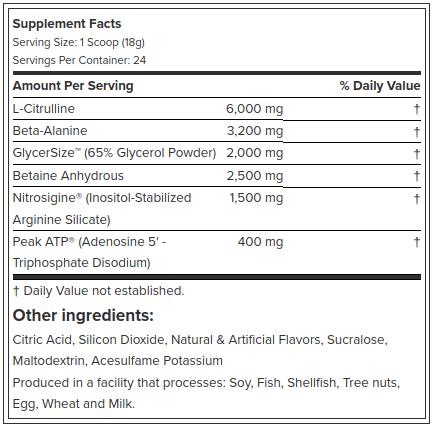
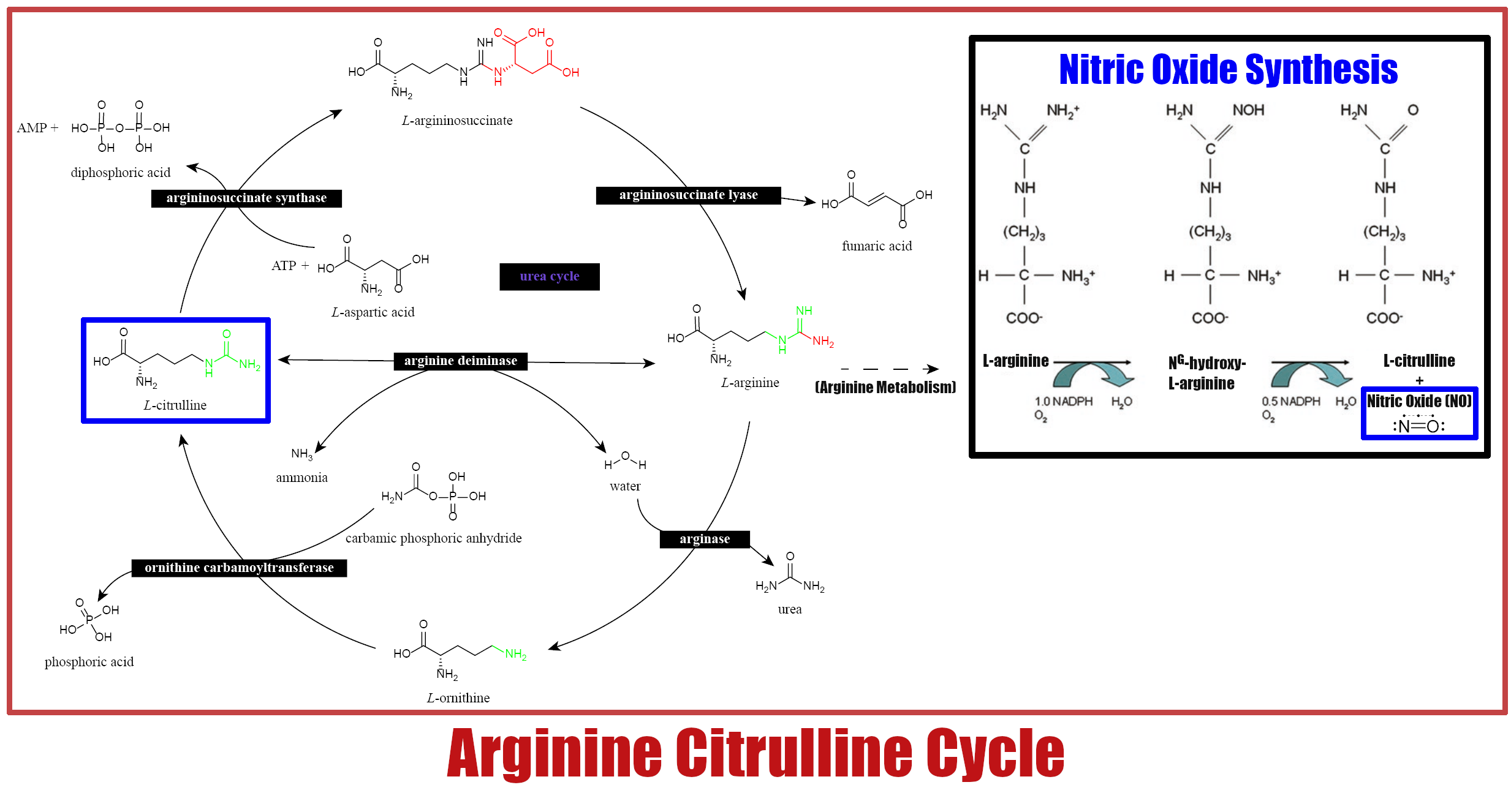
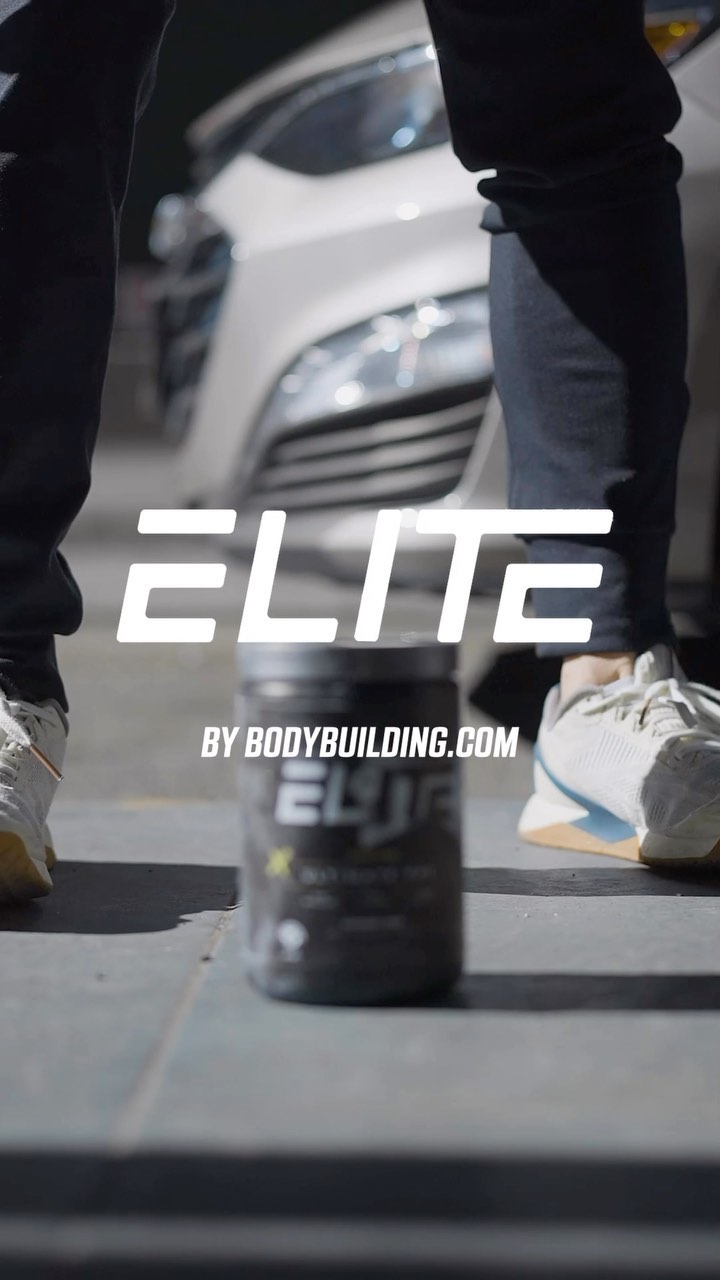

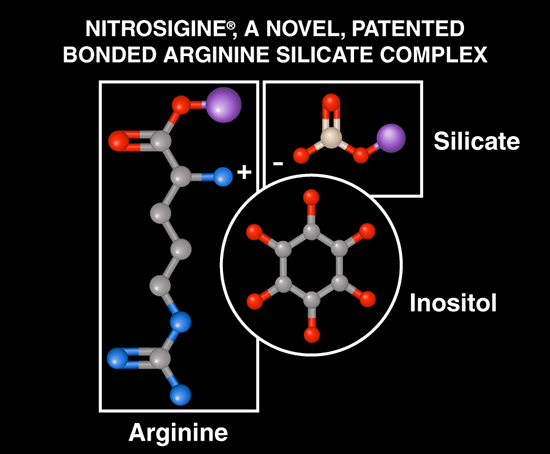
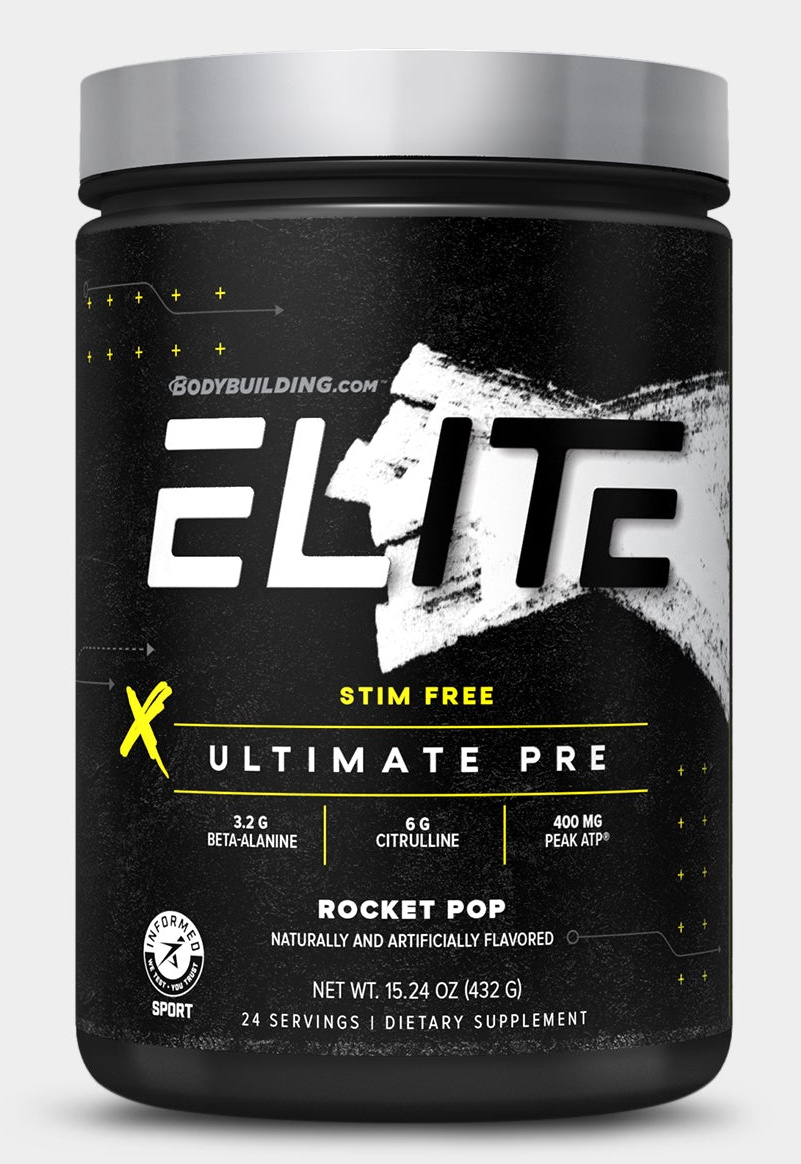
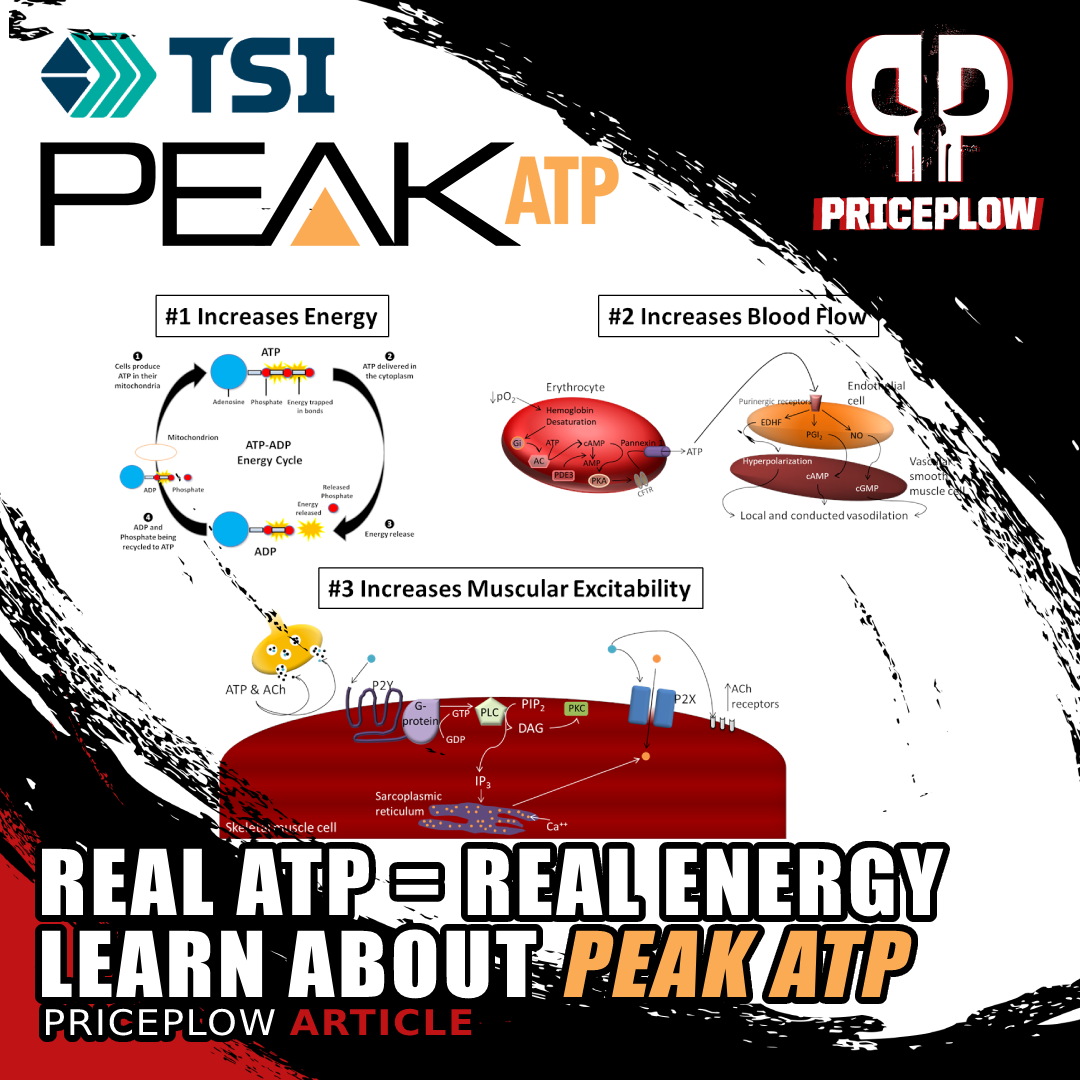
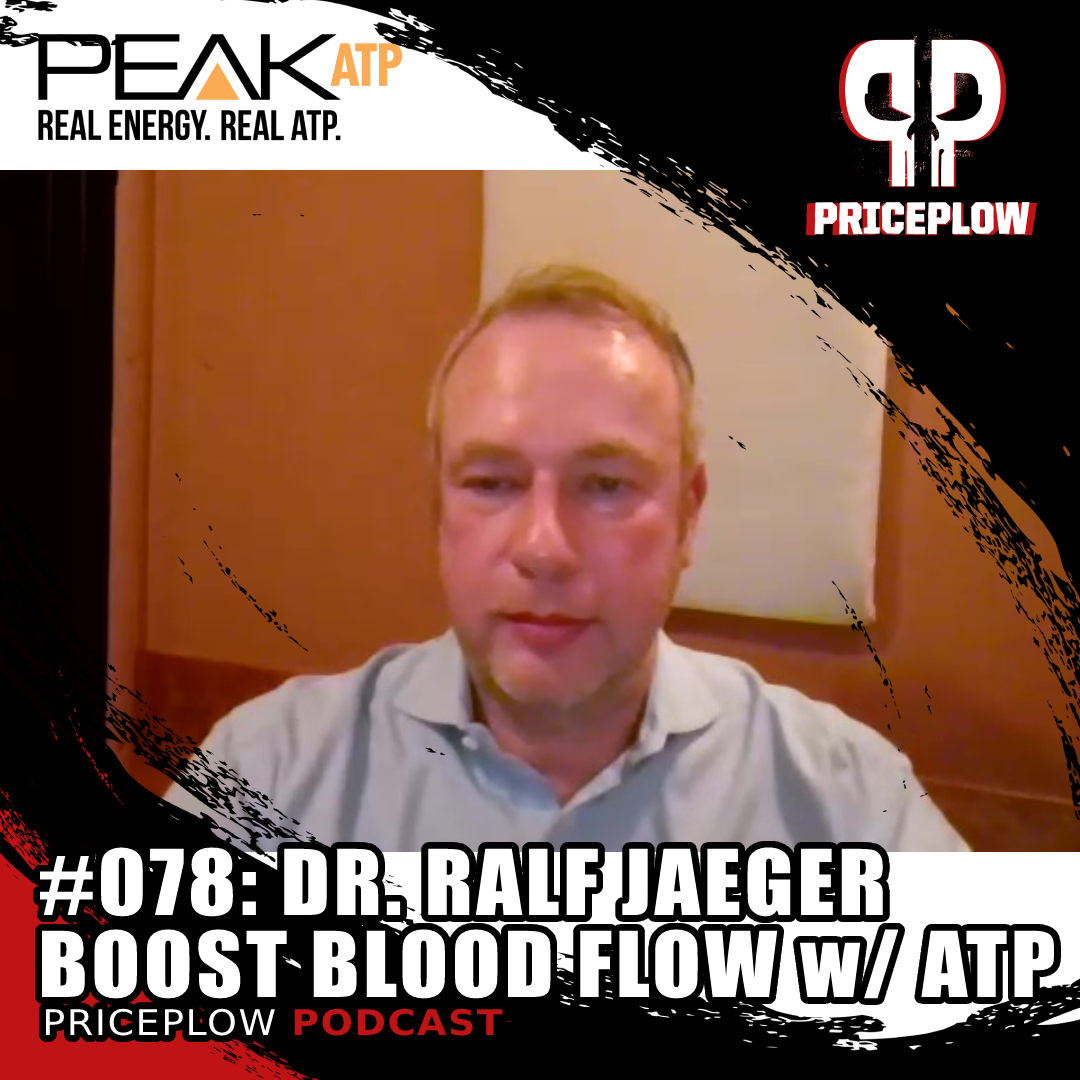
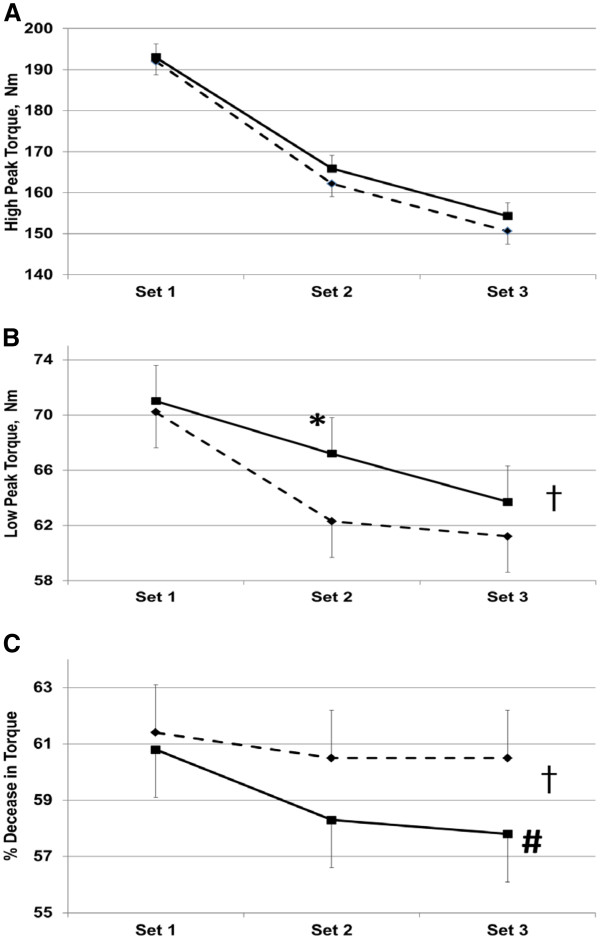
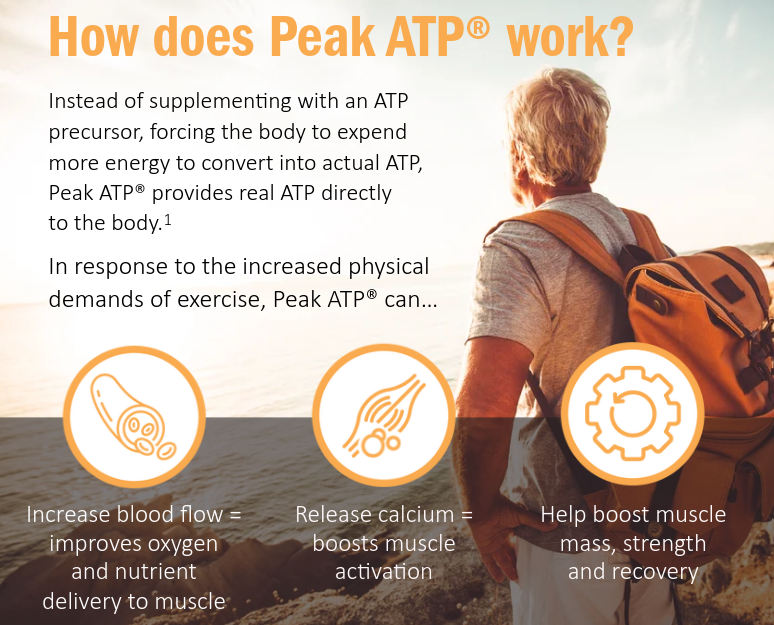

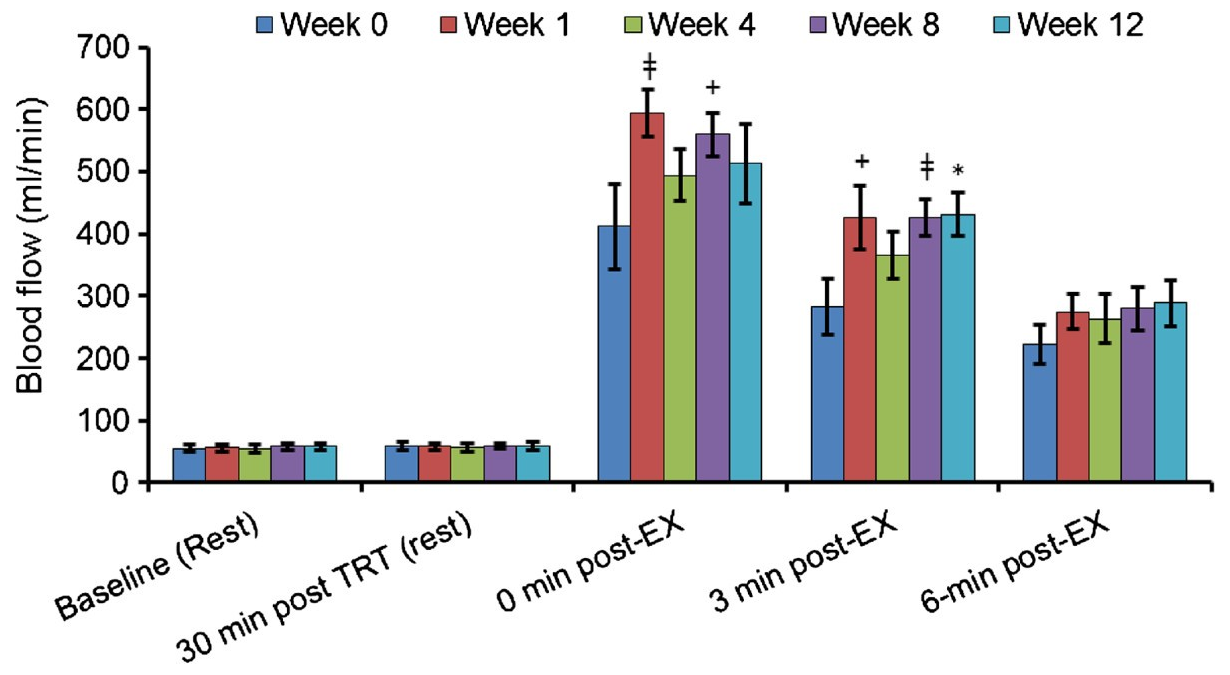
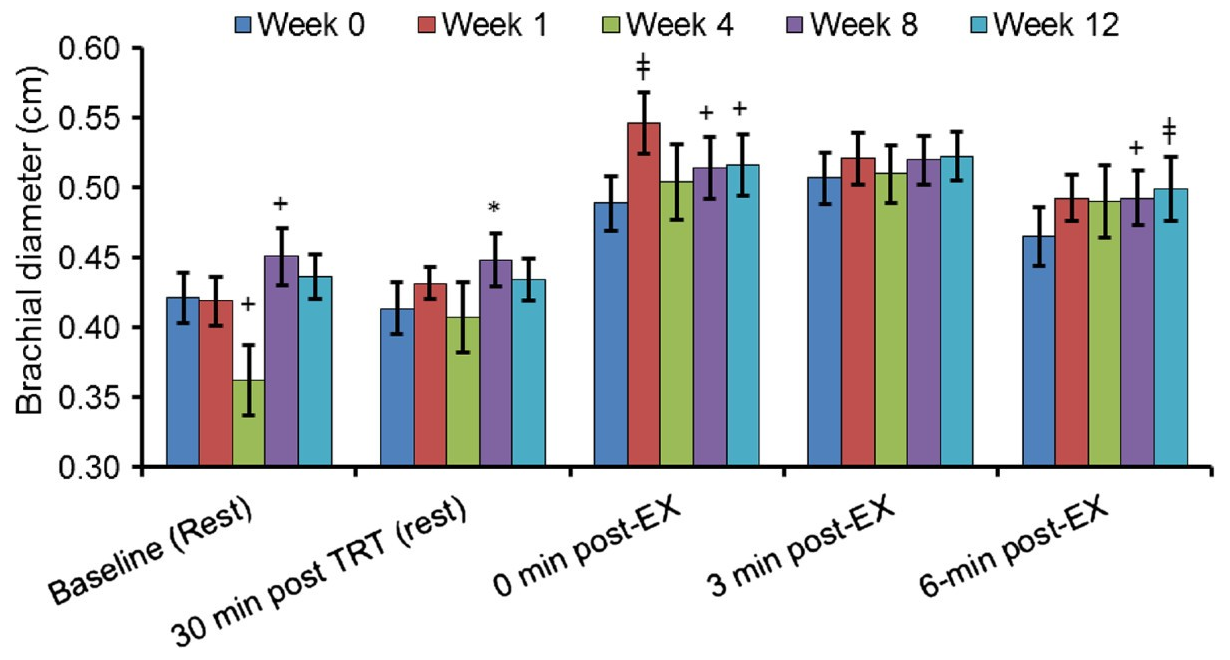
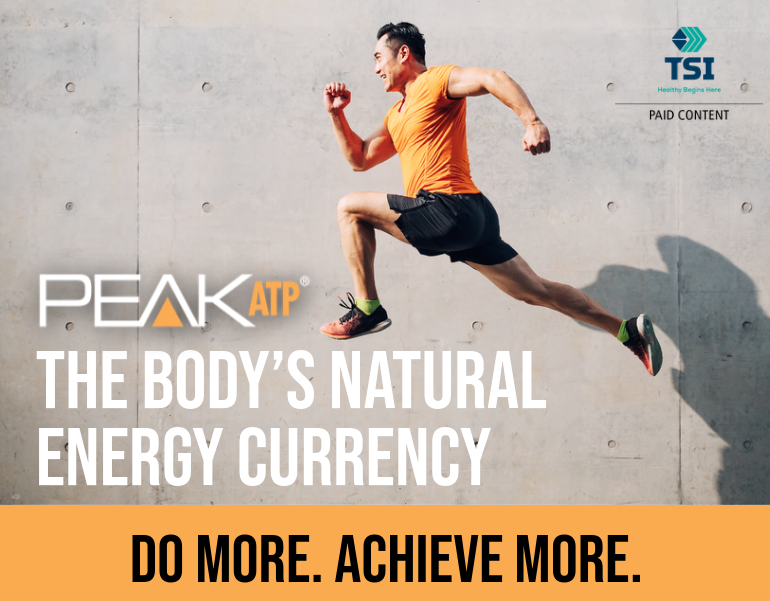
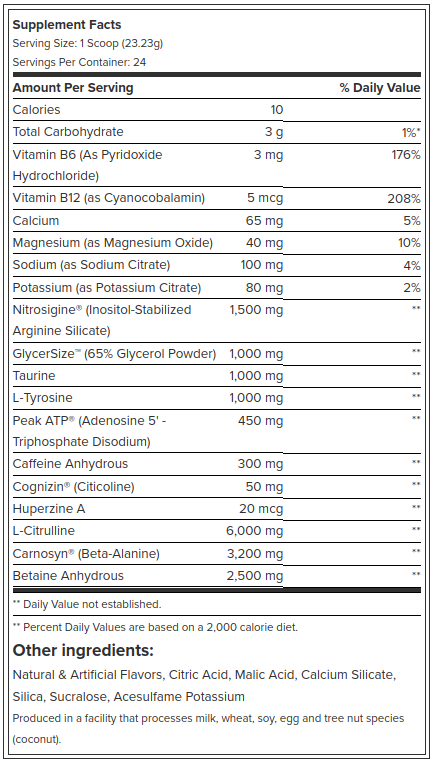
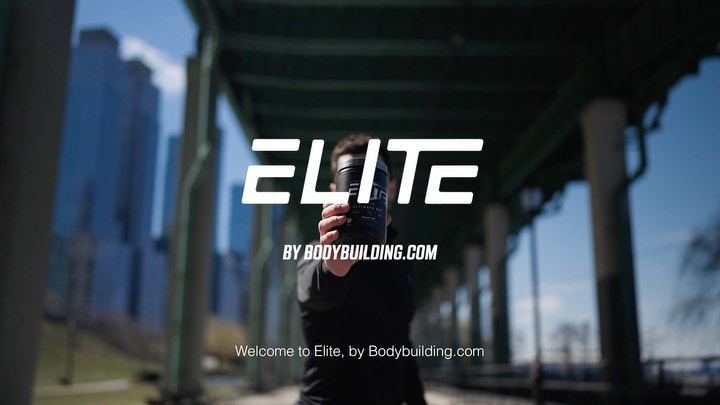
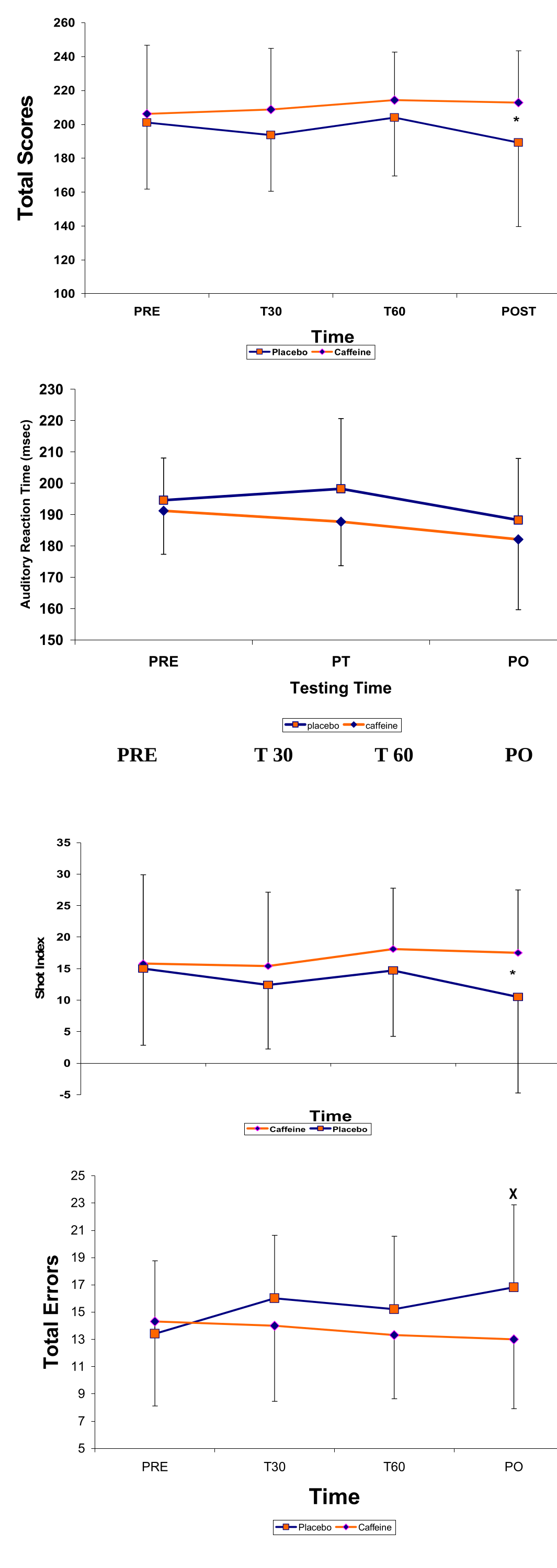
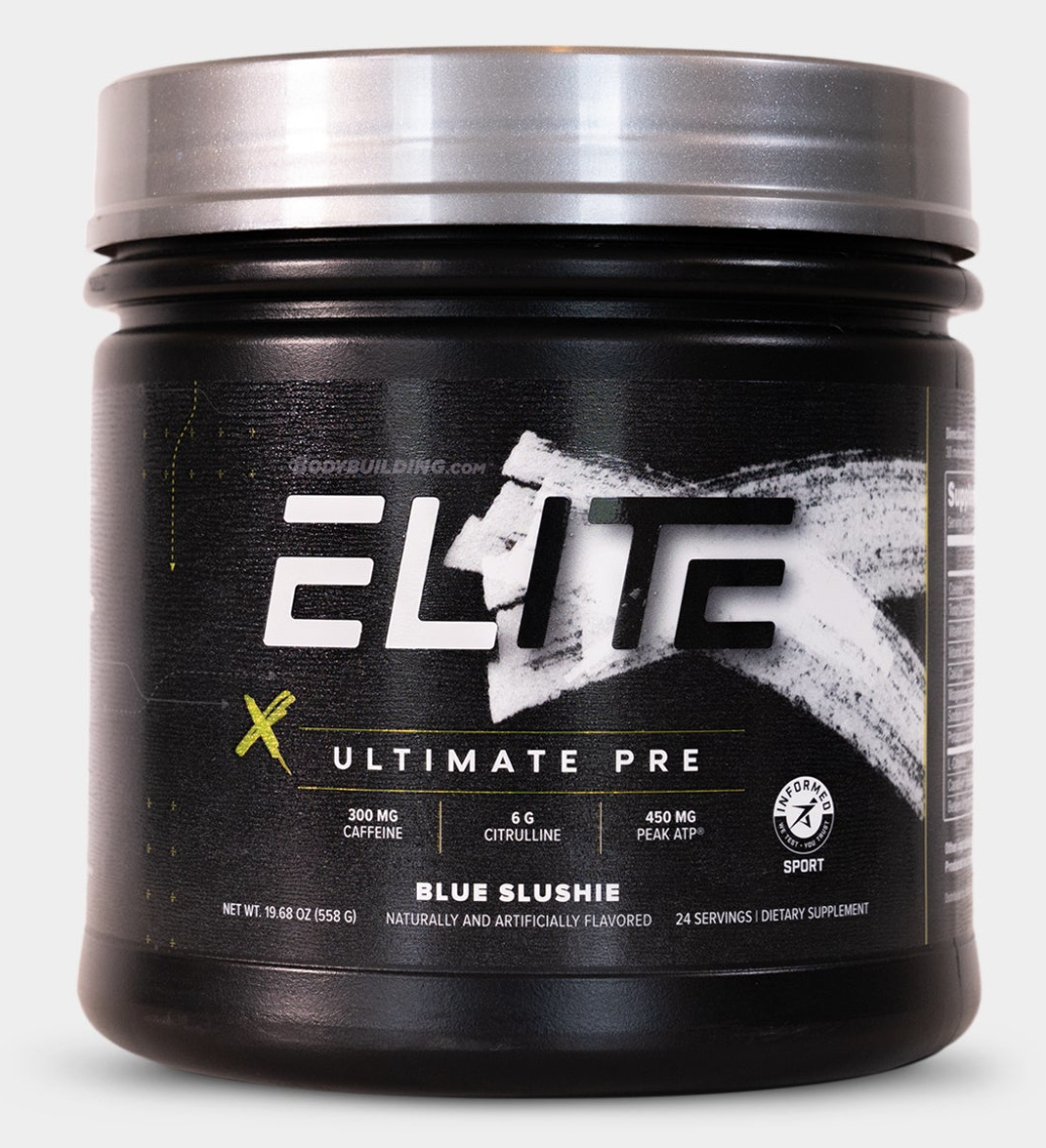
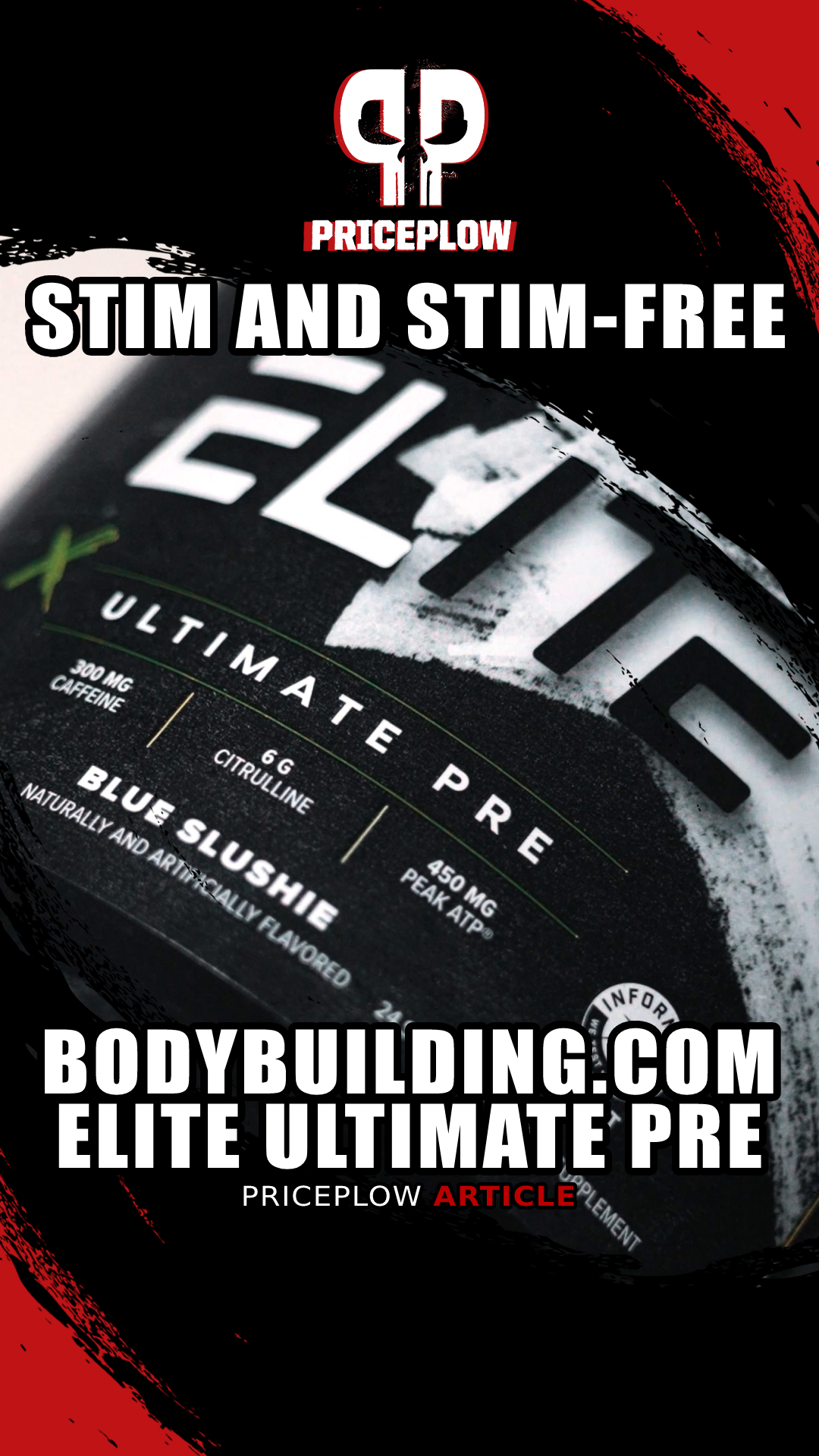


Comments and Discussion (Powered by the PricePlow Forum)